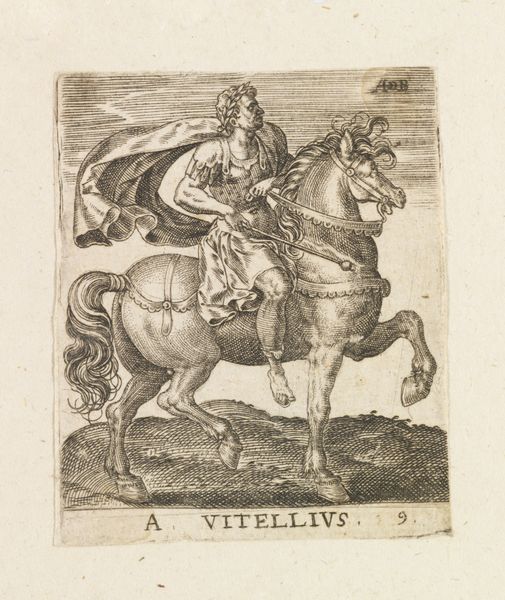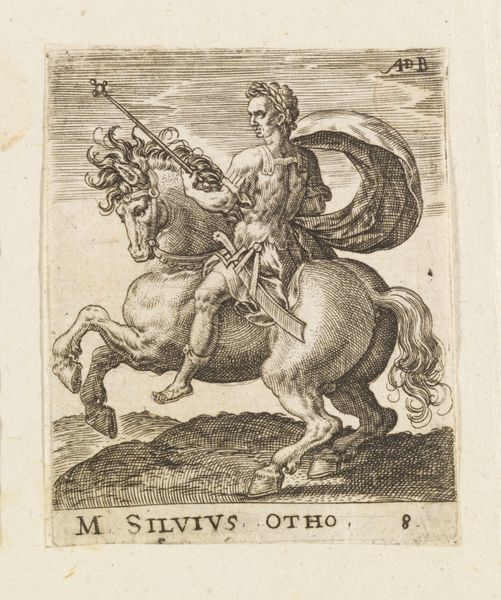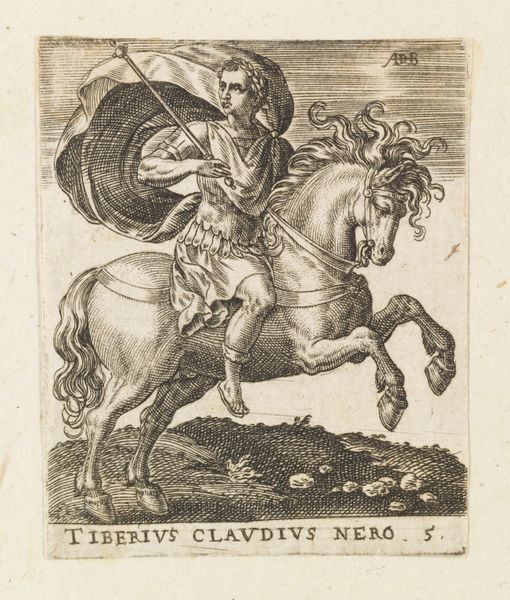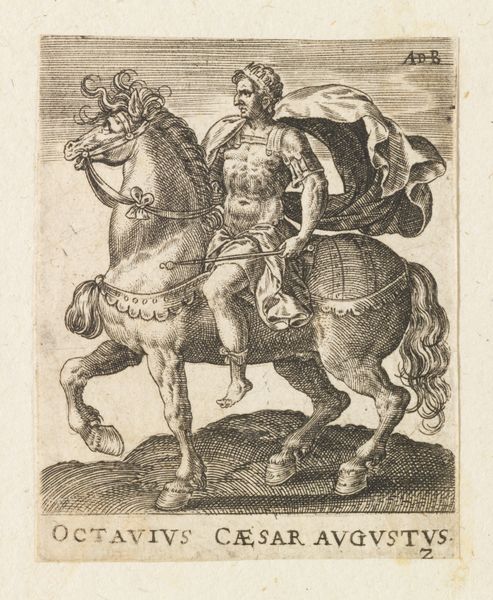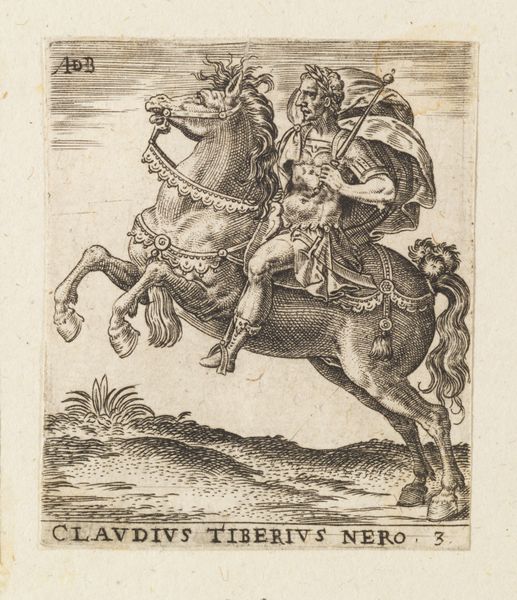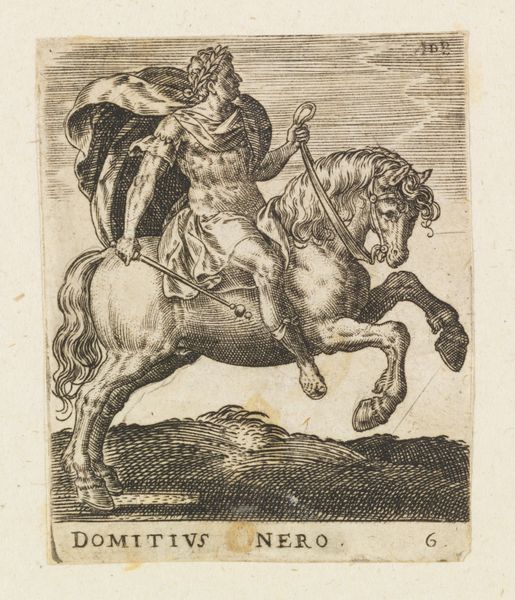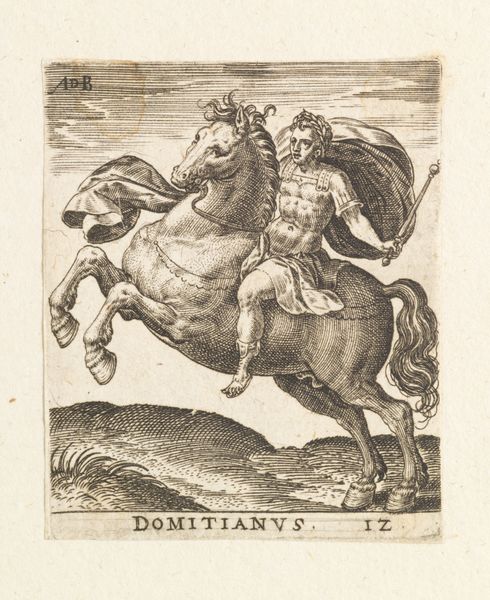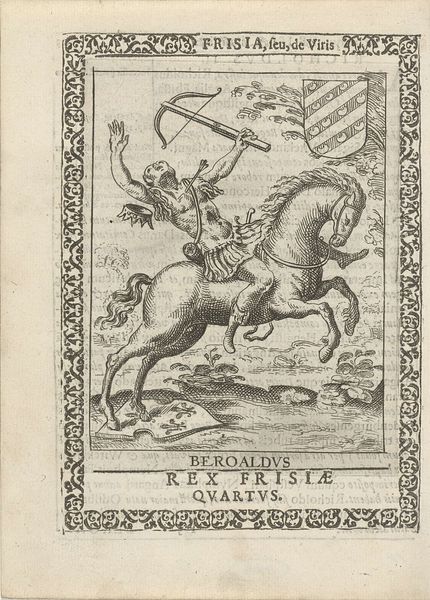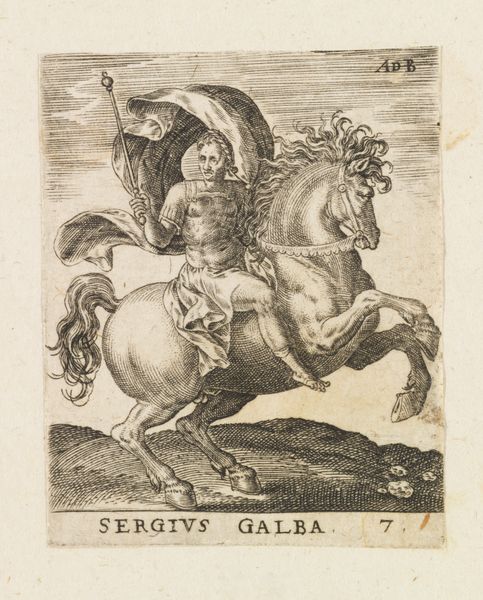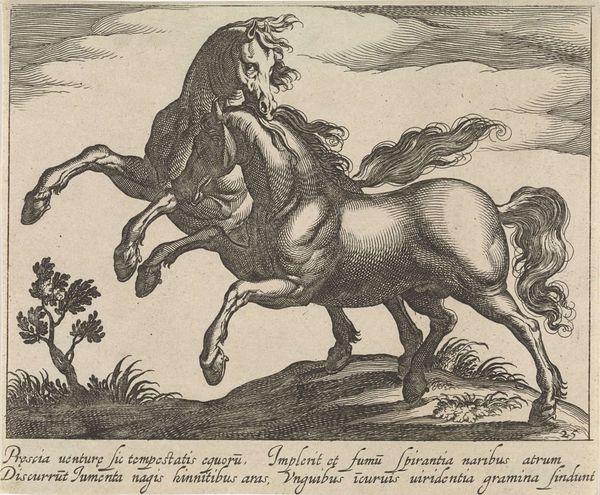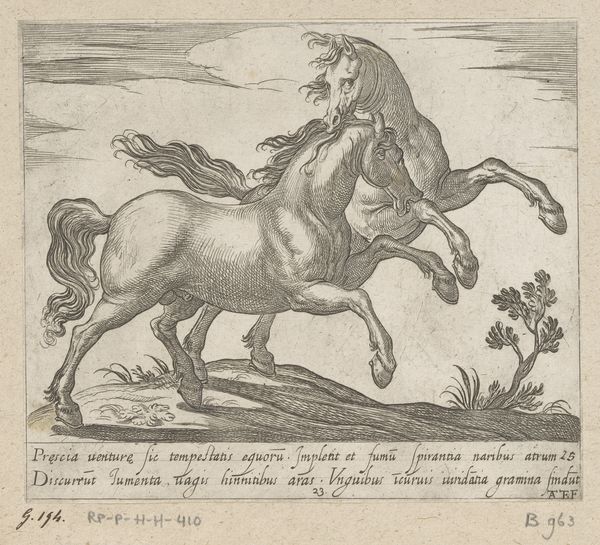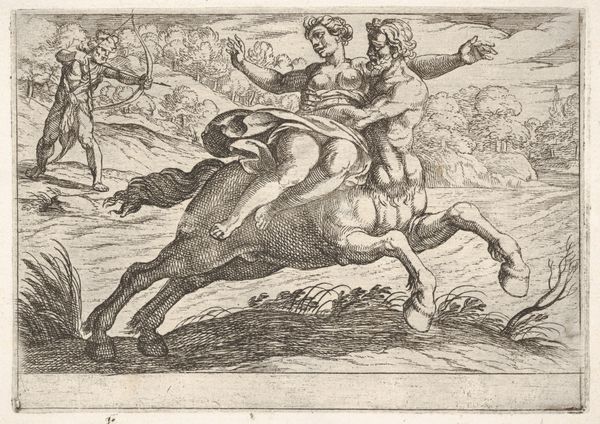
Titus Vespasianus, from "Twelve Caesars on Horseback" 1560 - 1592
0:00
0:00
drawing, print, engraving
#
portrait
#
drawing
# print
#
mannerism
#
figuration
#
history-painting
#
engraving
Dimensions: Sheet: 2 5/16 × 1 15/16 in. (5.9 × 5 cm)
Copyright: Public Domain
Curator: Abraham de Bruyn's engraving, "Titus Vespasianus, from Twelve Caesars on Horseback," created sometime between 1560 and 1592, offers us a window into how Renaissance artists viewed power and authority. Editor: Whoa! That horse has serious attitude! I mean, check out the arched neck, the flared nostrils… It’s pure, untamed energy bursting right out of this little print. Curator: The series from which this engraving originates speaks volumes about the period’s obsession with Roman history, but it's also worth asking what it meant to circulate images of leadership during a time of great political and religious upheaval in Europe. What does de Bruyn borrow from antiquity, and where does he depart? Consider the visual tropes he’s employing to signify power. Editor: For me, it's that contrast that gets me. We have Titus up there, all puffed up, but look how small he seems on this rearing beast. Is it power, or is it performance? He looks almost… precariously perched. Curator: Exactly. It's crucial to remember the socio-political backdrop. The artist is making commentary. How does the depiction of Roman emperors serve to legitimize or even critique contemporary rulers? This work participates in a broader dialogue concerning governance, imperial legacy, and perhaps even the dangers of unchecked authority. Editor: And technically, the engraving is impressive. That fine linework! The cross-hatching really gives weight to the figures and that turbulent ground they’re on. It’s so controlled, yet manages to convey such dynamism. The engraver knew what he was doing; every mark adds to the overall impression. It's almost rebellious but in a subtle, technical way. Curator: Absolutely. We need to explore the complex ways in which printmaking facilitated the spread of these ideas and consider its impact on popular perceptions of leadership. Also, note how the Mannerist style amplifies the tension through exaggerated forms. Editor: Thinking about it, maybe that sense of precariousness is the whole point. It's a tiny image, but packs such a punch, and perhaps it's about realizing all that historical weight... it is precarious after all. Curator: Yes, and perhaps it reminds us to remain critical about the narratives of power, both historical and contemporary, that are constantly presented to us. Editor: Exactly. Makes you think about who holds the reins, and what kind of ride we're all in for.
Comments
No comments
Be the first to comment and join the conversation on the ultimate creative platform.
